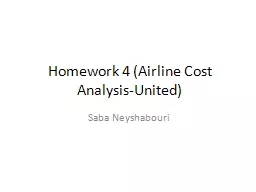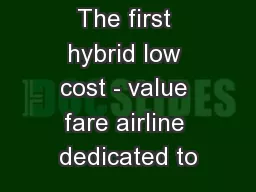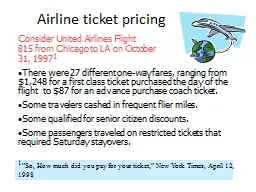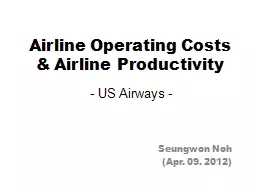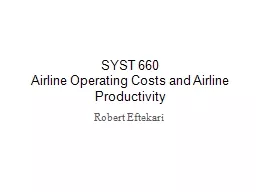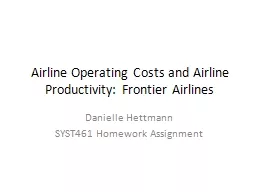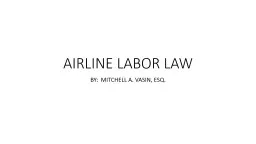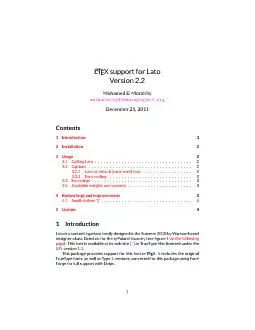PPT-Homework 4 (Airline Cost Analysis-United)
Author : conchita-marotz | Published Date : 2017-07-01
Saba Neyshabouri Airline of Study United Airlines United Airline is listed as a Legacy carrier Typical characteristics of legacy carriers are that they provide
Presentation Embed Code
Download Presentation
Download Presentation The PPT/PDF document "Homework 4 (Airline Cost Analysis-United..." is the property of its rightful owner. Permission is granted to download and print the materials on this website for personal, non-commercial use only, and to display it on your personal computer provided you do not modify the materials and that you retain all copyright notices contained in the materials. By downloading content from our website, you accept the terms of this agreement.
Homework 4 (Airline Cost Analysis-United): Transcript
Download Rules Of Document
"Homework 4 (Airline Cost Analysis-United)"The content belongs to its owner. You may download and print it for personal use, without modification, and keep all copyright notices. By downloading, you agree to these terms.
Related Documents

